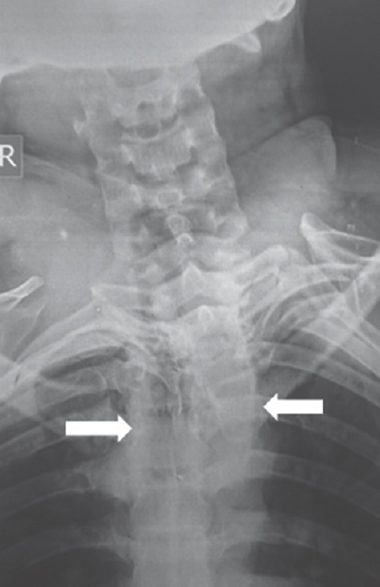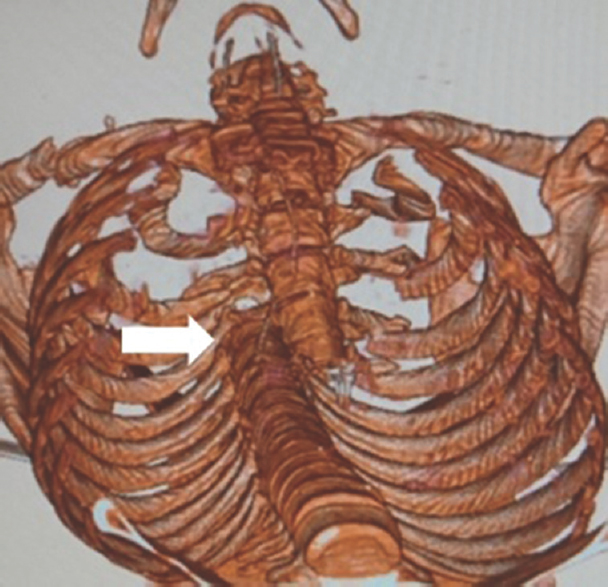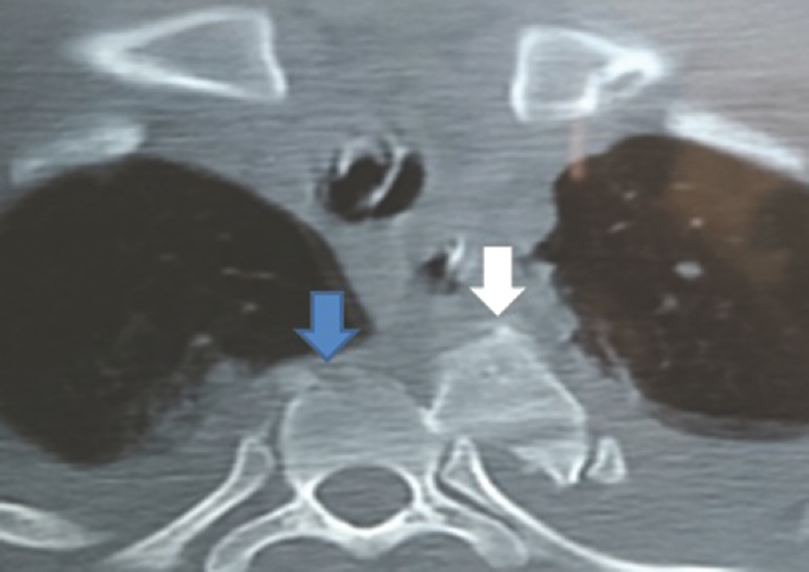Translate this page into:
Traumatic Complete Lateral Spondyloptosis of the Thoracic Vertebrae
Address for correspondence: Dr. Sunil Munakomi, Department of Neurosurgery, Nobel Teaching Hospital, Kanchanbari, Nepal. E-mail: sunilmunakomi@gmail.com
This is an open access journal, and articles are distributed under the terms of the Creative Commons Attribution-NonCommercial-ShareAlike 4.0 License, which allows others to remix, tweak, and build upon the work non-commercially, as long as appropriate credit is given and the new creations are licensed under the identical terms.
This article was originally published by Medknow Publications & Media Pvt Ltd and was migrated to Scientific Scholar after the change of Publisher.
A 30-year-old male was brought to emergency following a bike accident. He was conscious and well oriented to time, place, and person. He had paraplegia with complete loss of anal tone. There was complete loss of sensation from T3 region downward. He also had abdominothoracic type of abnormal breathing pattern. Emergent thoracic spine X-ray revealed complete misalignment of the thoracic vertebra [Figure 1]. The computerized tomography chest revealed complete lateral spondyloptosis of the thoracic vertebra with two vertebral levels upward migration between the spondyloptotic segments [Figures 2 and 3]. There were multiple rib fractures as well. The patient was intubated and kept on ventilatory support so as to minimize and support his work of breathing due to traumatic peripheral pattern of respiratory failure. The condition of the patient, however, kept deteriorating, and he finally succumbed to his injury on the 10th day of admission.

- X-ray image showing misalignment in the thoracic spine

- Computerized tomography thorax showing complete lateral spondyloptosis of the thoracic vertebrae

- Axial computerized tomography scan showing two adjacent vertebrae lying parallel to one another
Traumatic lateral spondyloptosis of the thoracic vertebrae is a very rare event owing to the fact that it is well protected by the thoracic cage together with the ligaments and the muscles, and therefore, substantial force is required to disrupt it.[1]
In selected cases with neurologically preserved patients, posterior spondylectomy has been considered a viable option for the management of such uncommon entity.[1]
Declaration of patient consent
The authors certify that they have obtained all appropriate patient consent forms. In the form the patient(s) has/have given his/her/their consent for his/her/their images and other clinical information to be reported in the journal. The patients understand that their names and initials will not be published and due efforts will be made to conceal their identity, but anonymity cannot be guaranteed.
Financial support and sponsorship
Nil.
Conflicts of interest
There are no conflicts of interest.
REFERENCE
- Management of traumatic double-level spondyloptosis of the thoracic spine with posterior spondylectomy: Case report. J Neurosurg Spine. 2015;23:715-20.
- [Google Scholar]





